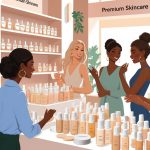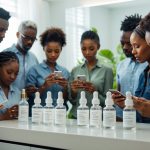New Sunscreen Label Warnings Dermatologists Urge You to Check Now
Why Sunglasses Matter
SPF 30 is “enough,” says every dermatologist, but honestly, who’s out here clocking reapplications? Sunglasses, though—most people just forget them. I did, for years. Then some optometrist hit me with the cataract speech. Not just headaches, apparently. The American Academy of Ophthalmology—which sounds way too official for my taste—claims wraparounds block 99–100% of UVA and UVB. You don’t need bougie ones. The $15 pharmacy pair with polarized lenses? Same protection. I lose mine constantly. Pretty sure there’s a Bermuda Triangle for sunglasses somewhere in my car.
Sunlight bounces off, like, literally everything. Sand, water, concrete—didn’t believe it until I roasted the bottom of my nose paddleboarding. That’s when it clicked: sunglasses aren’t just a vibe, they’re actual armor. The skin around your eyes is way thinner than you’d think, so it gets wrecked fast. Wrinkles, sun damage, even eyelid cancer if you’re unlucky. Now I stash backups everywhere. Squinting at glare just feels like tempting fate. And more wrinkles? Hard pass.
Limiting Sun Exposure During Peak Hours
Lunch outside? Always seems fun until you’re melting. Every dermatologist and the CDC (hi, paranoia) scream about 10 a.m. to 4 p.m. being the danger zone. I used to think clouds meant safety. Nope. UV rays don’t care about clouds. Still got burned waiting for my coffee. WebMD (and their army of experts) says dodge the worst hours; morning or late afternoon only. Try explaining that to your friends planning a noon BBQ. I’ll just bring aloe.
One derm nurse once told me people get burns while driving. Through the car window. No one puts that in the manual. I catch myself hiding in shade by 2 p.m. like a vampire. Heard this once: “If your shadow’s shorter than you, run for cover.” It’s true. Timing is everything. Picnics at noon? Only if you want to know your dermatologist better than your own family.
Proper Application and Reapplication for Maximum Effectiveness
Nobody’s gleefully slathering sunscreen every two hours. That’s a myth. But skipping it? That’s just begging the sun gods for a roasting. You need to know the basics: SPF, broad-spectrum, and “water-resistant” isn’t just a cute detail. Technique matters more than the bottle, apparently. That’s what every derm says, anyway.
How Much To Apply and How Often
A shot glass. That’s the magic number. About 1 oz (30 mL) for your whole body. But who’s actually measuring with barware on the porch? People use, like, half of that. The American Academy of Dermatology claims you need a teaspoon (5 mL) just for your face and neck. I don’t even know where my teaspoons are. “Generous” is not a measurement, but it’s what I do.
Reapplication. Ugh. Every two hours or after swimming or toweling off. “Water-resistant” is not waterproof—don’t trust the label. My coworker said, “People reapply only after they feel the sun.” Too late. Nobody’s immune. Dark skin burns too, even if you can’t see it. Learned that the hard way.
Sunscreen Use During Outdoor Activities
I only remember sunscreen right before kayaking, and then it sweats off before I even get in. Water, sweat, noon sun—those eat through sunscreen, even the “very water-resistant” ones. Canada says you have to reapply after 80–120 minutes of wetness. Who’s timing this, seriously?
Did you know visible light (like from your phone or just daylight) can make dark spots worse, especially after acne? Tinted mineral sunscreens with iron oxide help, but nobody told me that until after college. Ears, lips, knees, wherever your hat misses—those spots always burn first. It’s like a law.
If sunscreen stings your eyes, try stick or mineral formulas near the lashes. Chemical ones run. That’s from my derm friend, not me. Carry a mini bottle everywhere. Clinical guidelines say most burns happen from “just one more hour” outside. Bring more than you think. You’ll need it.
Potential Side Effects and Reactions to New Ingredients
Nobody warns you how fast “broad spectrum” can turn into “what the hell is this rash?” Even the gentle-looking tubes can make your skin freak out, especially if you’re already slapping on serums and spot treatments. Eczema? Get ready for a surprise.
Common Irritations and Allergic Responses
You think you’re safe—label says hypoallergenic, dermatologist-tested, SPF 50, “reef safe” (whatever that means). Then, boom: rash, stinging, red splotches, always in the worst spots like your nose or eyelids. Most new sunscreens mix chemical and mineral filters: oxybenzone, octocrylene, avobenzone, and a bunch of stuff I can’t pronounce.
Some people’s skin just hates everything. The FDA found oxybenzone in blood above their limit (JAMA, 2020). Derms say zinc oxide, titanium dioxide, or iron oxide (for melasma) sting less, especially if you’ve got rosacea. But I read some Reddit guy swears even mineral ones ruined his skin faster than his last breakup. Patch test on your inner arm. Always. Why does sunscreen smell so weird after swimming? Never figured that out.
Special Considerations for Children and Sensitive Individuals
Pediatricians don’t mess around. Babies under 6 months? No sunscreen. Just UPF clothes and hats. That’s it. Parents always ask if “sensitive skin” labels mean anything. Sometimes, but not always. Most “kids” sunscreens ditch fragrances and parabens for zinc or titanium, which are less likely to mess with eczema or acne.
But I’ve seen gentle $30 sticks cause allergic chaos, while cheap grocery store lotion soothed someone’s rosacea. Ingredient lists are only half the story. Sensitive types should watch for alcohols, avobenzone, formaldehyde releasers (still a thing), and preservatives. Derms say reapply mineral formulas before sweating. Why do sunscreen labels peel off in the sun? Annoying.



